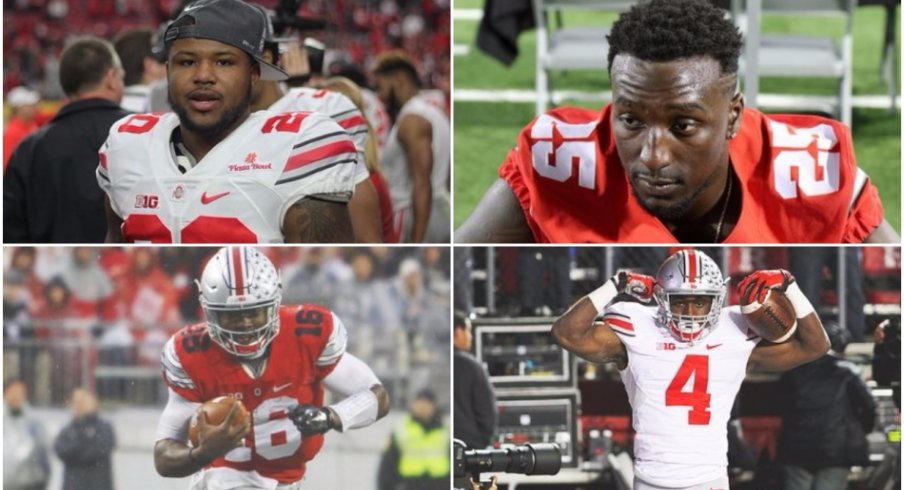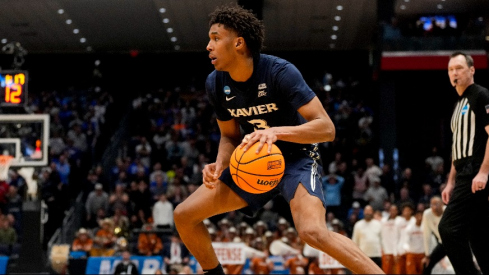Following a mass exodus of players expected to be selected in the upcoming NFL Draft, there's no shortage of concern about how particular position groups will respond as Ohio State's spring practice continues.
On the offensive side of the ball in particular, one of the great challenges for Urban Meyer and staff will be to replace the rushing production lost with the departures of leading rusher Ezekiel Elliott (1,821 yards), third-leading rusher Braxton Miller (260 yards) and fourth-leading rusher Cardale Jones (193 yards) along with the lesser ground contributions from Jalin Marshall (30 yards) and Warren Ball (28).
With what seems like a Herculean task to replace all those yards, I looked back at each Buckeye season since Meyer's arrival to put in context just how big of challenge we're talking about heading into the 2016 slate.
| HEADING INTO YEAR: | RUSHES LOST | % OF RUSHES LOST | RUSH YDS LOST | % OF RUSH YDS LOST | RUSH TD LOST | % OF RUSH TD LOST |
|---|---|---|---|---|---|---|
| 2016 | 407 | 72% | 2,332 | 73% | 26 | 67% |
| 2015 | 27 | 4% | 108 | 3% | 4 | 10% |
| 2014 | 333 | 52% | 2,401 | 56% | 28 | 62% |
| 2013 | 11 | 2% | 33 | 1% | 2 | 5% |
| 2012 | 159 | 28% | 701 | 28% | 8 | 40% |
2012
Tasked with turning around a program reeling from the after effects of Tatgate and on the verge of churning out the first seven-loss football season since 1897, Urban Meyer inherited a 2012 squad poised to return its top five rushers excepting Boom Herron who finished 2011 ranked second on the team in rushing with 675 yards (4.5 ypc, 7 TD).
With 2011's leading rusher, Braxton Miller, back in the fold after a 159 carry, 715 yard season including seven touchdowns along with third-leading rusher Carlos Hyde (106 carries, 566 yards) back to do the heavy lifting, Meyer plenty to work with.
The duo of Miller (1,271 rush yards) and Hyde (970) – behind a well-oiled offensive line featuring studs like Jack Mewhort, Andrew Norwell, Corey Linsley – led the Buckeyes to an undefeated season combining to rush for 2,241 of Ohio State's 2,907 total rushing yards with a hefty 29 touchdowns.
Fellow returnees from the 2011 squad, Jordan Hall and Rod Smith combined to tally 433 rushing yards and three touchdowns meaning the top four returning rushers from 2011 went off for 2,674 yards, or 92% of the team's total ground output along with 86% of the rushing touchdowns (32 of 37).
2013
With the postseason ban hanging like a black cloud over the program following a perfect 12-0 season culminated by a 26-21 win in Ann Arbor, good news was otherwise plentiful as Meyer returned his top six rushers and four of his five starting linemen.
The lone loss in the backfield was fullback Zach Boren and while indeed a valuable cog in 2012, the Pickerington product rushed for just 33 yards. Up front, Meyer had to replace right tackle Reid Fragel but with highly touted Taylor Decker ready to join what was set to evolve into an historically great foursome in Mewhort, Norwell, Linsley and Marcus Hall, the Buckeyes ran absolutely wild.
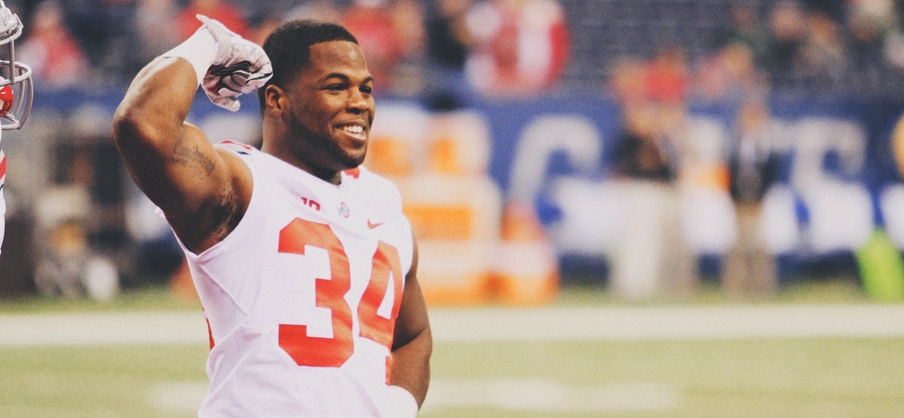
During what became a disappointing 12-2 season thanks to back-to-back losses to end the season – Michigan State in the B1G championship game and Clemson in the Orange Bowl – the rushing attack will still very much on point as the Buckeyes tallied a school-record 4,231 rushing yards on the season with 45 touchdowns.
Hyde was simply a beast with 1,521 rushing yards on 7.3 yards per carry along with 15 touchdowns while Miller added another 1,068 yards and 12 touchdowns giving the Buckeyes a lethal 1-2 punch. Jordan Hall added a solid 536 yards on the ground with eight scores and a freshman by the name of Ezekiel Elliott even announced himself to Buckeye fans with 262 yards on 8.7 per tote with a pair of scores.
2014
After losing just 1% of his rushing yards entering the 2013 slate, it was a much different story entering 2014 as Meyer and company saw 52% of the carries, 56% of the rushing yards (2,401) and 62% of the rushing touchdowns (28) leave the program with the departures of Hyde, Hall and Guiton.
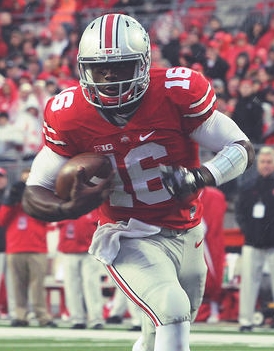
Up front, the challenge was also steep with Mewhort, Norwell, Linsley and Hall exiting the program leaving just Decker as a returning starter though he would move from right to left tackle.
As if those losses weren't significant enough, the Buckeyes would lose Miller to a torn labrum just over a week before the season opener meaning they now had lost 79% of the team's carries from 2013 along with 80% of the rushing yards and 89% of the rushing touchdowns.
Such losses would devastate most programs but with Meyer and Tom Herman directing the offense while Ed Warinner broke in the four new starters along the offensive line in Billy Price, Jacoby Boren, Pat Elflein and Darryl Baldwin, the Buckeyes eventually evolved into an offensive juggernaut.
The emergence of Miller's replacement, J.T. Barrett was a pleasant surprise as he went on to accumulate 938 rushing yards with 11 touchdowns before his ankle snapped in the regular season finale against Michigan.
As much as Barrett's play helped ease the loss of Miller it was Elliott's explosion especially down the stretch that catapulted the team to the College Football Playoff national championship.
After going for at least 100 rushing yards in just six of Ohio State's first 10 games, Elliott rushed for over 100 yards in each of the final five games – going for over 200 in the final three outings – accumulating an astounding 924 rushing yards during the stretch as part of a magical season in which he totaled 1,878 rushing yards on 6.9 per carry with 18 touchdowns.
2015
Featuring an embarrassment of riches at nearly every position group, the 2015 squad returned its top five rushers from 2014 meaning not only were Zeke and Barrett back but so were talented guys like Curtis Samuel, Jalin Marshall and Dontre Wilson. Though he would switch positions, Miller was also back and expected to be a weapon in the run game. In fact, Ohio State would only need to replace the sixth-leading rusher among its top 10 ball carriers, Rod Smith, who carried it 24 times for 101 yards.
The offensive line was also largely intact with the return of Decker, Price, Boren and Elflein while Chase Farris joined the fold at right tackle.
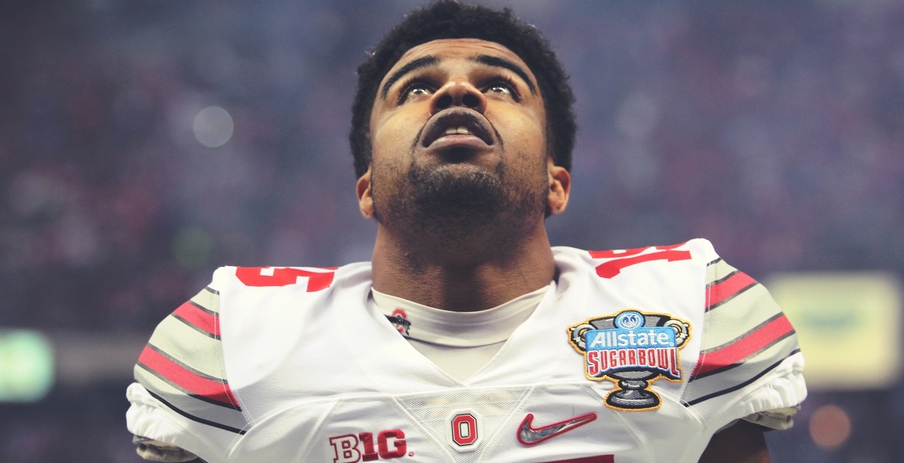
Despite being overwhelming favorites to repeat as national champs the 2015 squad struggled to look as hungry and cohesive as the 2014 outfit. On the ground, Elliott was still a big time performer yielding 1,821 yards on 6.3 per carry with 23 touchdowns.
A reserve until the eighth game of the season, Barrett still finished second on the team with 682 rushing yards with 11 scores though it wasn't until the final two games of the season – wins over Michigan and Notre Dame – that the two-headed monster of Barrett and Elliott truly blossomed. In those wins the duo combined to rush for an insane 598 yards and nine touchdowns.
2016
Turning the page to present day, Meyer is now faced with the loss of 72% of last year's carries along with 73% of the rushing yardage and 67% of the accompanying touchdowns.
Obviously, Elliott accounts the largest hit as the all-time great churned out 57% of the squad's rushing yards and 59% of the scores while the losses of Miller and Cardale Jones mean the team's third and fourth-leading rushers are no longer in the fold.
The challenge to replace that yardage is also compounded by the departures of Decker, Boren and Farris leaving Price and Elflein as the lone starters up front.
The good news is Barrett is back, won't be looking over his shoulder for Cardale's shadow and is expected to be fully healthy. The other bright spot from an experience standpoint is the return of Curtis Samuel, who tallied 17 carries for 132 yards last year as an underutilized H-back / wide receiver.
With Meyer seemingly content for now to keep Samuel in the slot despite his obvious talent and need for touches, the opportunity to be Ohio State's starting tailback currently rests in the hands of Dunn and redshirt freshman Mike Weber.
Thus far through spring drills, Meyer recently handicapped the race as a dead heat which could be a good or bad thing depending on how you choose to look at it.
While it's worth remembering Elliott was far from a lock to burst on the scene and emerge as a truly elite tailback in 2013, it would be incredibly optimistic to think Weber or Dunn will approach similar heights in 2016.
If neither player can lock down the spot or if tailback by committee doesn't prove effective enough, it could mean Samuel sees much more time at tailback than in the slot.
With so many questions still to be answered along the line and at tailback, how effective Ohio State can be at replacing the rushing production lost from a season ago will be a key factor to watch as the Buckeyes hope to realize a reload versus rebuild scenario in this particular facet of the game.
